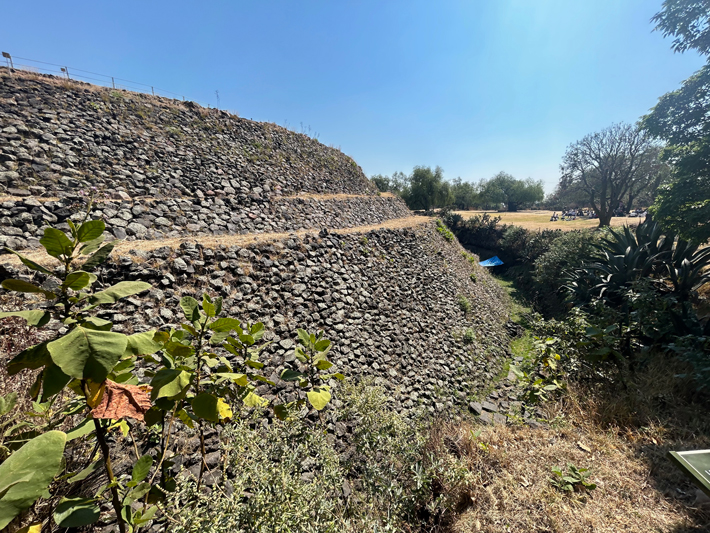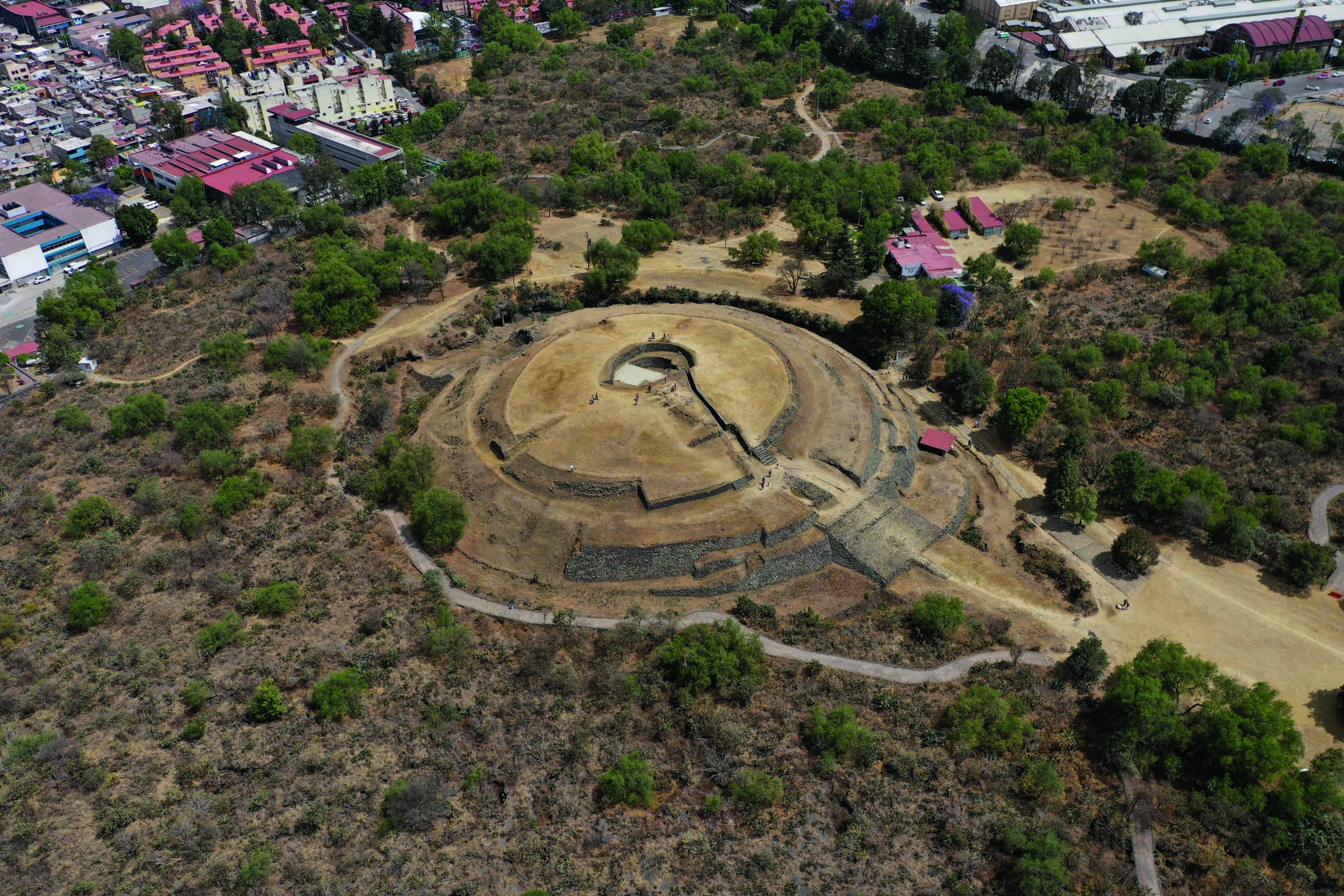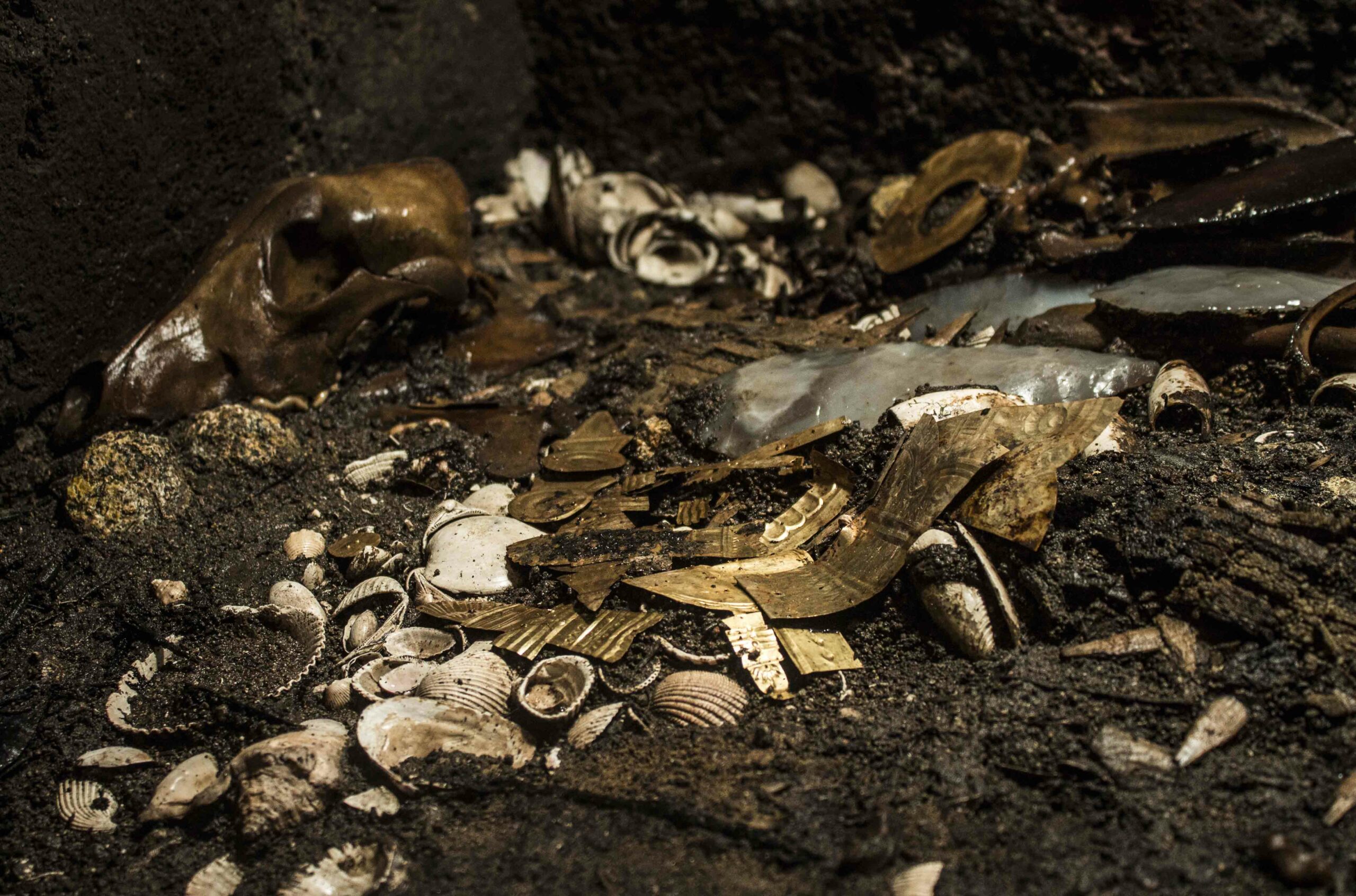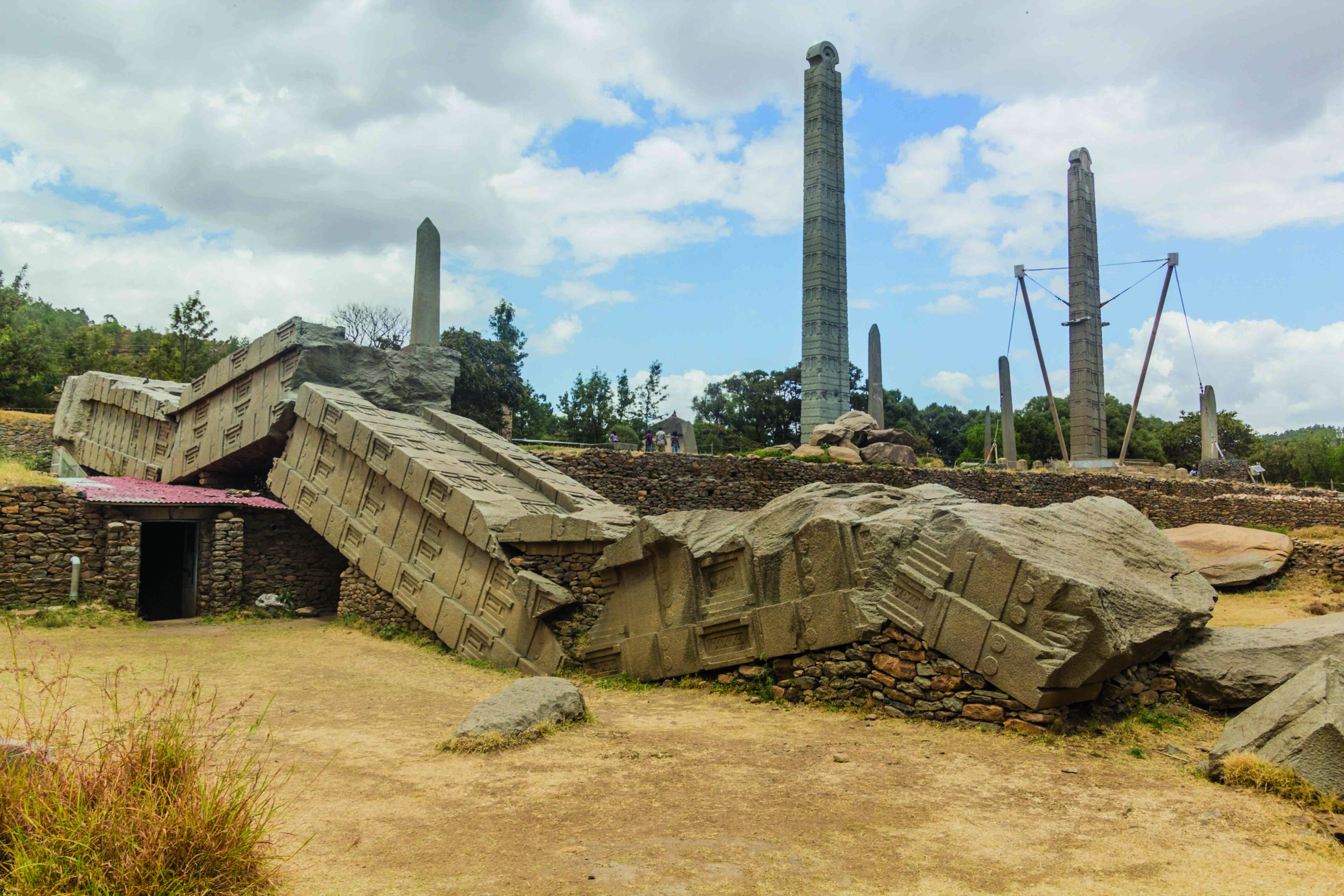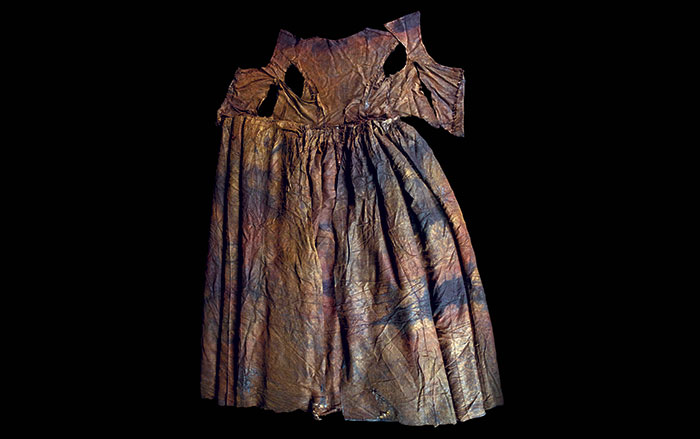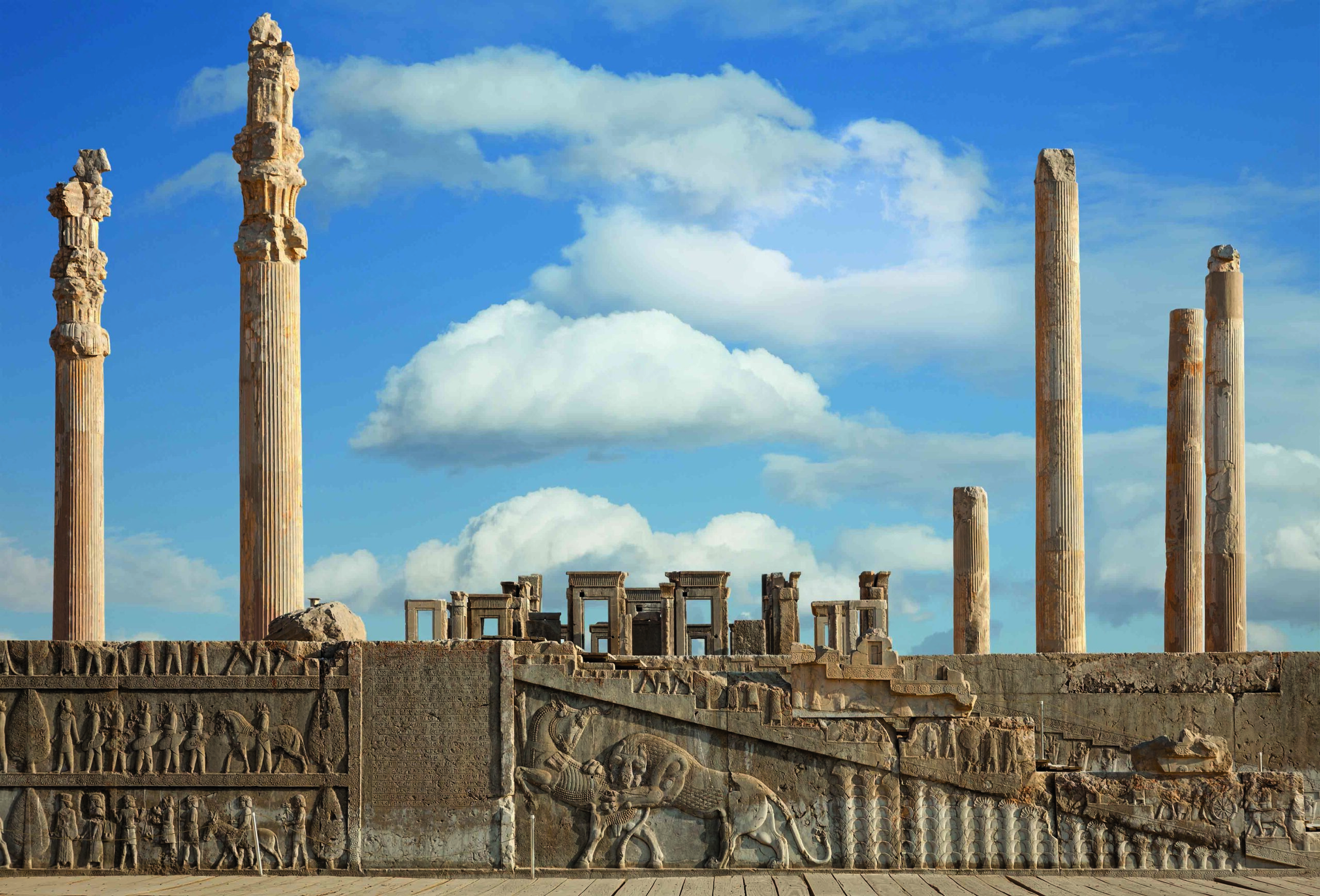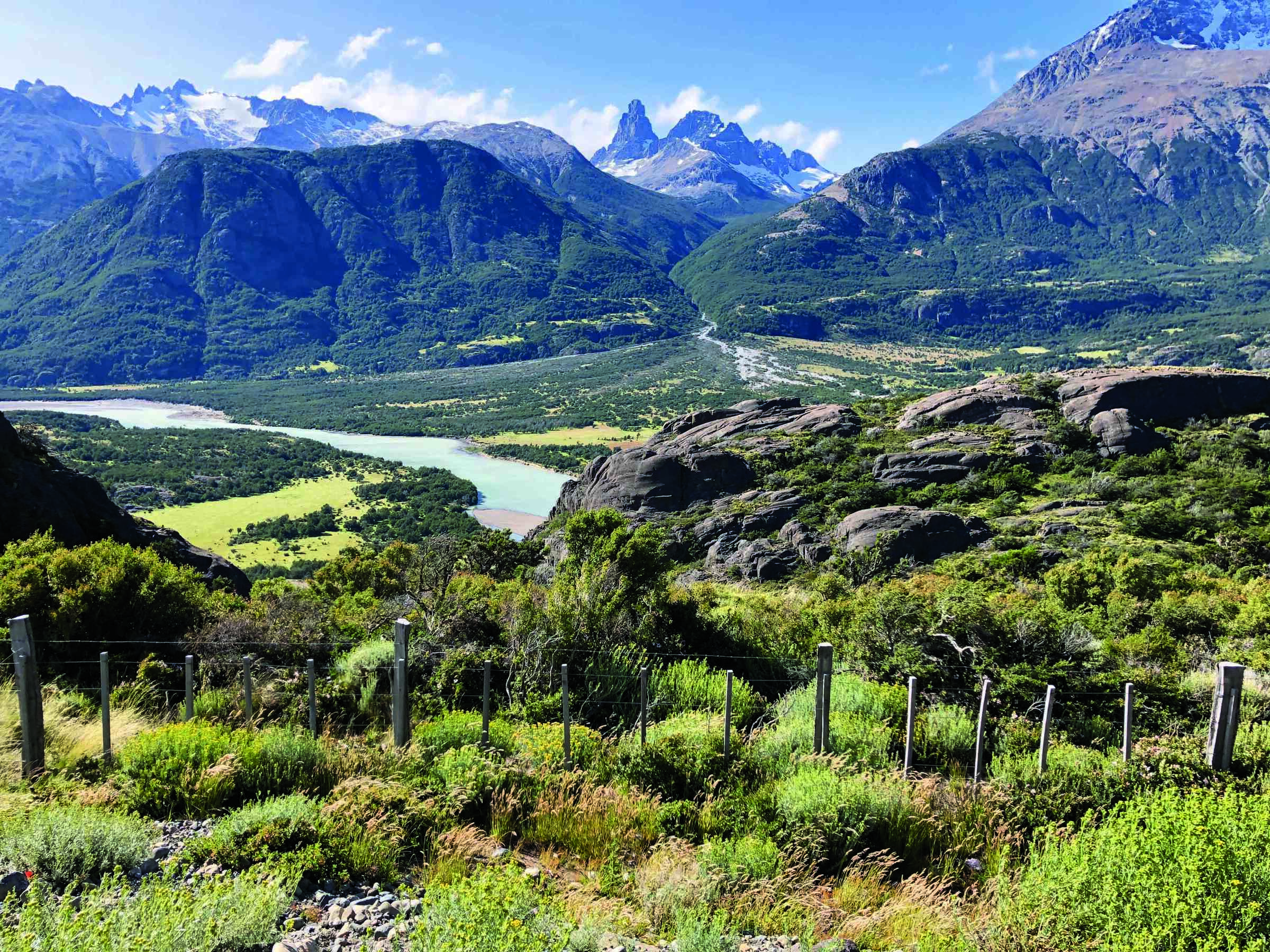
One of Mexico’s most important archaeological sites is hidden in plain view in the Tlalpan borough of southern Mexico City. Few people make the 12-mile drive from downtown to Cuicuilco, but the site’s surprising and enigmatic history makes it well worth the trip. “Cuicuilco is central Mexico’s first true city,” says Boston University archaeologist David Carballo.
Cuicuilco was settled around 800 B.C. by early farmers who were already living in sedentary village communities. Over the next millennium, it grew until it was home to a population of 20,000 who thrived in this relatively lush area by channeling water to irrigate their land and for use in domestic and religious spaces. “Cuicuilco may be the best example in the center of Mesoamerica of a complex early society with a well-organized hydraulic agricultural system,” says archaeologist Alejandro Pastrana of Mexico’s National Institute of Anthropology and History.
It is, however, impossible to say what most of ancient Cuicuilco looked like. In about A.D. 250, it, along with a surrounding area of some 50 square miles, was buried by the eruption of the Xitle Volcano, in some places to a depth of as much as 30 feet. The basaltic lava field, today known as the Pedregal de San Angel, covers most of the ancient city, and what is not encased in lava and has not been excavated lies under the modern neighborhood. The eruption forced Cuicuilco’s residents to abandon their city and move north, where they encountered a great culture on the rise in the burgeoning metropolis of Teotihuacan, which had been founded around 100 B.C. “People from Cuicuilco did not establish Teotihuacan, as has been proposed,” says Pastrana.

THE SITE
The first excavations at Cuicuilco took place between 1922 and 1925—aided by explosives to break up the lava. At the time, the only visible ancient structure was the top of the site’s unusual round pyramid, which dates to the fifth century B.C. and is one of the oldest monumental structures in Mesoamerica. Some exploration took place prior to the construction of the Olympic village for the 1968 games, salvage excavations were undertaken in the 1990s, and Pastrana is currently conducting limited work. As of now, the 85-foot-tall, 360-foot-wide pyramid, which is dedicated to a god of fire who is also associated with volcanoes, has been completely excavated, as have two other temples and what may be a large civic complex. All are usually open to visitors.
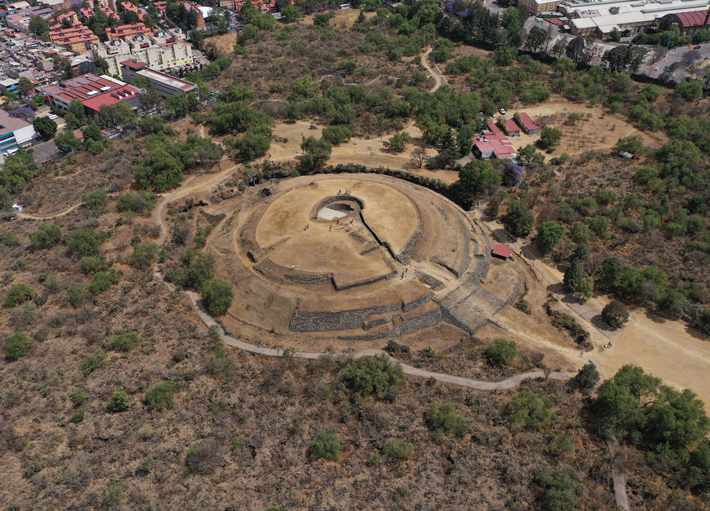
WHILE YOU’RE THERE
It’s best to take a taxi, which is inexpensive in Mexico City, to Cuicuilco. On the way, stop at the University Olympic Stadium, where events of the 1968 summer games were held. It is decorated with a mural by Mexican artist Diego Rivera depicting, among other subjects, a Spanish man, an Indigenous woman, and the Mesoamerican deity Quetzalcoatl. Here, Dick Fosbury won gold in the high jump, debuting his innovative flop technique, and athletes Tommie Smith and John Carlos bent their heads and raised their black-gloved fists during the 200-meter race medal ceremony.
